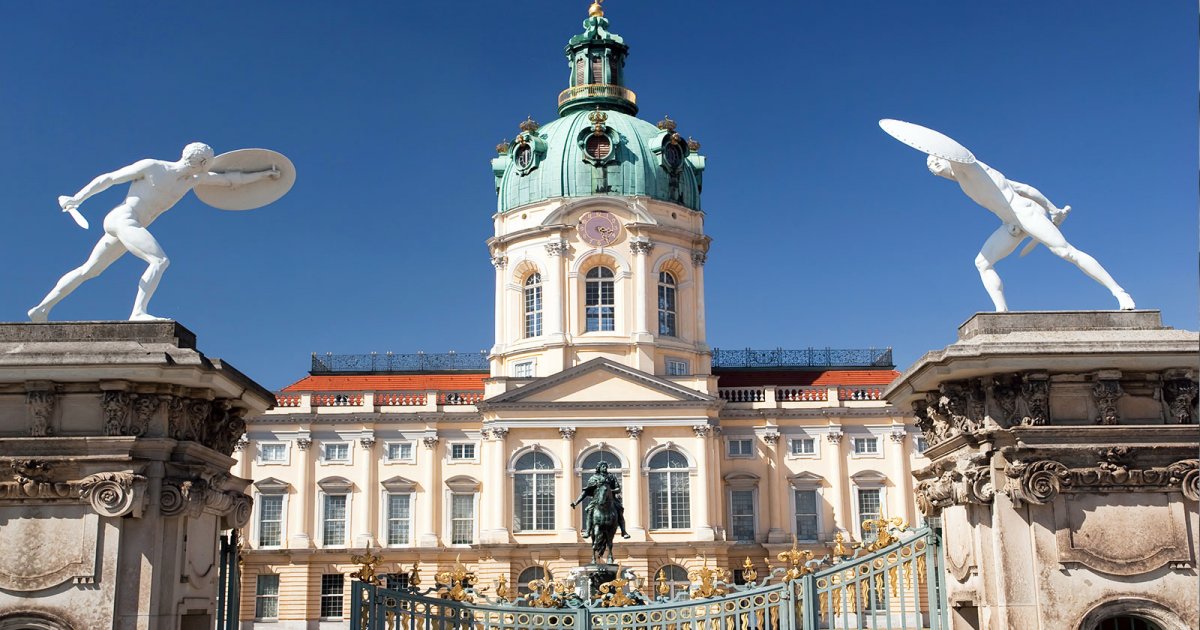SCHLOSS CHARLOTTENBURG, Castle Exterior
 Language: English / USA
Language: English / USA
Hi, my name’s Scott, and I’m your personal guide. Along with MyWoWo, I’d like to welcome you to one of the Wonders of the World: Schloss Charlottenburg.
Schloss Charlottenburg, the royal palace, is a clear indication of the power of the Hohenzollern dynasty, which reigned first over Brandenburg and then over the whole of Germany.
The Palace, with its splendid gardens, is the main attraction of the Charlottenburg neighborhood, on the south-western side of central Berlin.
During a bombing raid on November 23, 1943, it suffered such serious damage that it was feared the building would have to be completely demolished. In 1952, however, the decision was taken to reconstruct the palace, which was thus restored to its former splendor by works completed around 1970.
You have to enter the court of honor to admire the exterior of this magnificent palace. Opposite you, you’ll find the statue of Frederick William of Hohenzollern on horseback, crafted by Andreas Schlüter in 1699. The sculpture originally stood opposite the residence of the royal family in the Mitte neighborhood in the center of the city. In order to save it from the war, it was moved to Potsdam, but it sank along with the ferry that was carrying it in Lake Tegel. It was not recovered until 1950, and was placed here in 1965.
Charlottenburg Palace was built during several periods. The main body of the building is the original core, built on the orders of the Great Elector Sophia Charlotte of Hanover, the wife of Frederick I of Prussia, who wanted a summer residence outside of Berlin. The project was entrusted to two architects, Johann Arnold Nering and Martin Grünberg, and was completed in Baroque style in 1699.
The palace was first expanded at the beginning of the 18th century, with the addition of a left wing, while the right wing was commissioned around 1746 by Frederick II the Great, who entrusted the project to Georg Wenzeslaus Von Knobelsdorff.
Three other buildings, located in the gardens, complement this magnificent architectural complex: the Neuer Pavillon, or “new pavilion”, the Belvedere and the Mausoleum.
An interesting fact: in 1705, upon the death of Sophia Charlotte, Frederick was so distraught that he renamed this residence and the surrounding neighborhood after his beloved wife.



